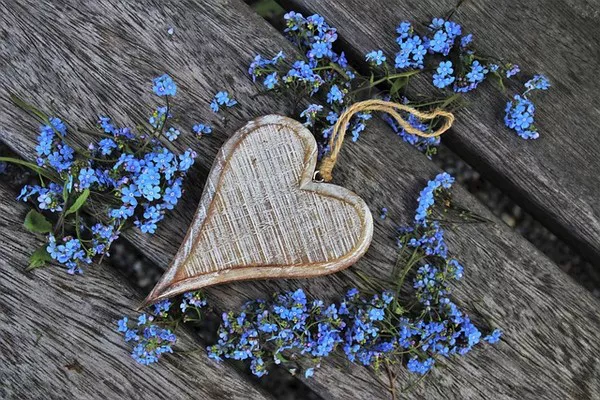Flowers are nature’s delicate masterpieces, captivating us with their vibrant colors, intricate shapes, and enchanting fragrances. Preserving these ephemeral wonders allows us to extend their beauty beyond their natural lifespan. Whether you’re looking to cherish a sentimental bouquet, create everlasting floral arrangements, or simply revel in the joy of preserving nature’s artwork, mastering the art of preserving real flowers is a rewarding endeavor. In this comprehensive guide, we will explore various techniques and methods to ensure your blooms remain timeless.
Choosing the Right Flowers
Before delving into preservation techniques, it’s crucial to choose the right flowers for preservation. Not all flowers respond equally well to preservation methods, and selecting the right blooms can significantly impact the success of your preservation efforts. Opt for flowers that are at their peak, with vibrant colors and minimal signs of aging or damage.
Popular choices for preservation include roses, lilies, daisies, and baby’s breath. Additionally, flowers with thicker petals and sturdy structures tend to fare better during the preservation process.
Air Drying
Air drying is one of the oldest and simplest methods for preserving flowers. This technique involves hanging flowers upside down in a dry, dark, and well-ventilated space. Here’s a step-by-step guide to air drying your flowers:
Selecting Flowers: Choose flowers with low moisture content and remove any excess foliage. Tie them together in small bunches using a string or rubber band.
Hanging: Suspend the flower bunches upside down in a cool, dark area with good air circulation. Ensure that the flowers do not touch each other to prevent mold growth.
Patience is Key: Allow the flowers to air dry completely. This process may take several weeks, depending on the type of flower and environmental conditions.
Preserving Shape and Color: To maintain the shape and color of the flowers, consider using a drying agent like silica gel. Gently bury the flowers in the drying agent and leave them until fully dried.
Pressing Flowers
Pressing flowers is a timeless method that allows you to preserve the delicate beauty of blooms while creating flat, visually appealing arrangements. This technique is ideal for creating personalized artwork, bookmarks, or greeting cards. Here’s how to press flowers effectively:
Flower Selection: Choose flowers with flat or relatively thin petals for better pressing results. Place the flowers between sheets of absorbent paper, such as blotting paper or parchment paper.
Pressing: Lay the flower between the pages of a heavy book, ensuring that the pages are lined with the absorbent paper. Place additional weight on top of the book to press the flowers flat.
Patience and Monitoring: Leave the flowers undisturbed for two to four weeks. Check periodically to ensure the flowers are drying evenly and without mold.
Sealing the Deal: Once fully pressed and dried, carefully remove the flowers from the paper. Seal them with a clear sealant or laminate for longevity and protection.
Using Desiccants
Desiccants are materials that absorb moisture, making them an excellent choice for drying and preserving flowers rapidly. Silica gel is a widely used desiccant for preserving flowers. Here’s how to use silica gel for flower preservation:
Prepare the Flowers: Trim excess foliage and cut the flower stems to your desired length. Arrange the flowers in a container with enough space between them.
Burying in Silica Gel: Gently pour silica gel over and around the flowers until they are completely covered. Make sure the flowers are not touching each other or the sides of the container.
Sealing the Container: Cover the container with an airtight lid to create an environment conducive to moisture absorption.
Waiting Game: Allow the flowers to sit in the silica gel for about a week or until completely dry. Once dried, carefully remove the flowers and brush off any remaining silica gel.
Preservation Finish: Seal the preserved flowers with a clear sealant or hairspray to protect them from environmental elements.
Freeze Drying
Freeze drying is a sophisticated method that preserves flowers by removing moisture while maintaining their original shape and color. While this technique may require specialized equipment, it offers exceptional results. Here’s a brief overview of the freeze drying process:
Preparation: Trim excess foliage and arrange the flowers in a way that ensures they maintain their desired shape during the process.
Freezing: Place the flowers in a specialized freeze-drying machine. The low temperature freezes the flowers, allowing for the subsequent removal of moisture.
Vacuum Chamber: The frozen flowers are placed in a vacuum chamber, where the moisture turns into vapor and is removed. This process preserves the flowers while maintaining their natural appearance.
Finishing Touch: Once the freeze-drying process is complete, the flowers may be treated with a clear sealant for added protection.
See Also: How To Grow Plants From Cuttings?A Comprehensive Guide
Conclusion
Preserving real flowers is an art that allows us to capture and savor nature’s fleeting beauty. Whether you opt for the simplicity of air drying, the nostalgia of pressing, the efficiency of desiccants, or the sophistication of freeze drying, each method offers unique benefits. Experiment with different techniques and find the one that best suits your preferences and the specific flowers you wish to preserve. With patience, attention to detail, and a touch of creativity, you can transform ephemeral blossoms into timeless treasures that will be cherished for years to come.


